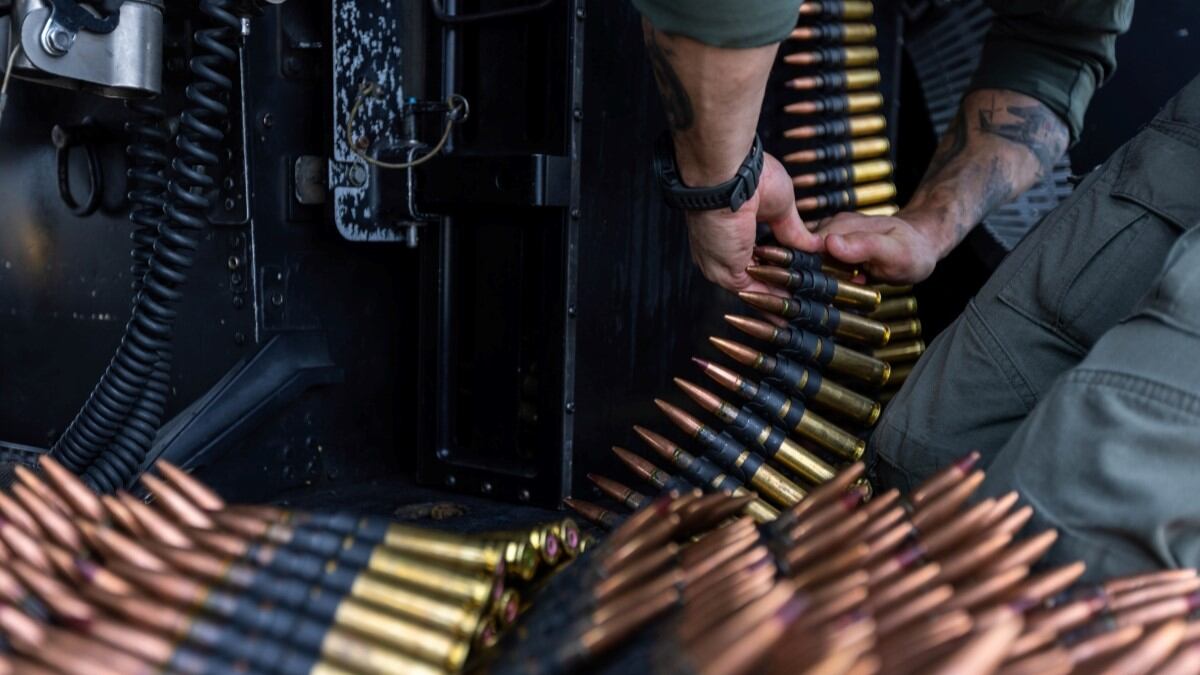The Marine Corps is exploring whether it could buy significantly lighter 0.50 caliber ammunition, as part of an ongoing effort to trim the weight Marines carry on their backs.
Marine Corps Systems Command in September asked ammunition vendors for their interest and capabilities to manufacture cartridges 24%–30% lighter than what Marines currently carry, in what’s known as a request for information.
The idea is that lighter ammo would make Marines quicker and more agile, traits “critical to battlefield survivability,” Systems Command spokeswoman Morgan Blackstock told Marine Corps Times.
The request for information, first reported by Military.com, is just market research, and the government isn’t obligated to pay for any information it receives, according to the request. But it indicates the Marine Corps is still working toward its longstanding goal of trimming the weight of ammunition.
In her award-winning 2019 thesis for the Naval Postgraduate School, then-Capt. Courtney Thompson used data from nearly 1 million simulated firefights to find that 15 pounds of extra gear results in additional casualties for a rifle squad.
The Marine Corps asked for information on a belt of 100 .50 caliber cartridges, with a total weight of 20.3 pounds–22.0 pounds, which would be approximately three-quarters the weight of what Marines currently carry, according to the request. Now, a box of two cans of 100 rounds each weighs a total of 77 pounds, Blackstock said. Not an apples to apples comparison, of course.
The Marine Corps’ request for information doesn’t specify how vendors would shave off extra weight. In recent years, the service has looked into using polymer cartridge casings rather than the traditional brass ones.
After receiving responses from industry and assessing whether it’s likely a vendor could manufacture the round, the Marine Corps will decide whether to do further evaluation of the proposal “via a follow-on contracting action,” according to Blackstock.
The Corps anticipates the lightweight .50 caliber ammunition would be delivered to the fleet by the end of 2026, Blackstock said.
Blackstock didn’t directly address a Marine Corps Times question about whether lighter ammunition would lead to Marines carrying more of it, but she noted that weight reduction would reduce fuel consumption and other transportation costs, and perhaps weapon system maintenance costs.
One component of Force Design 2030, the Marine Corps’ sweeping overhaul initiative, is making Marines nimbler, faster and therefore — ideally — less likely to get tracked and killed by an enemy.
Another component is updating logistics for a fight in which Marines are spread out in small groups and those resupplying them could come under attack. With that in mind, the Corps is working to reduce Marines’ demand for fuel in particular, according to the installations and logistics planning document.
Irene Loewenson is a staff reporter for Marine Corps Times. She joined Military Times as an editorial fellow in August 2022. She is a graduate of Williams College, where she was the editor-in-chief of the student newspaper.





